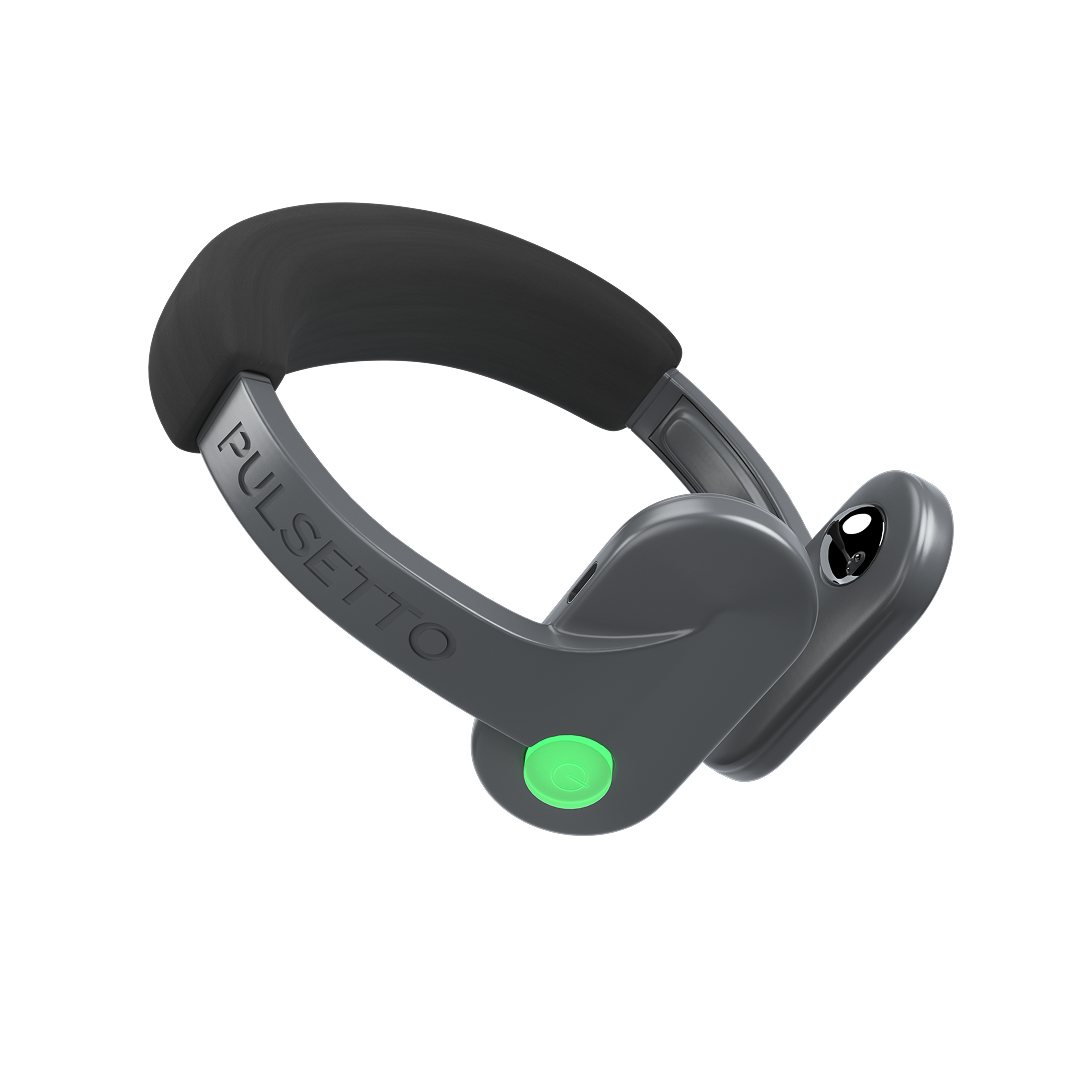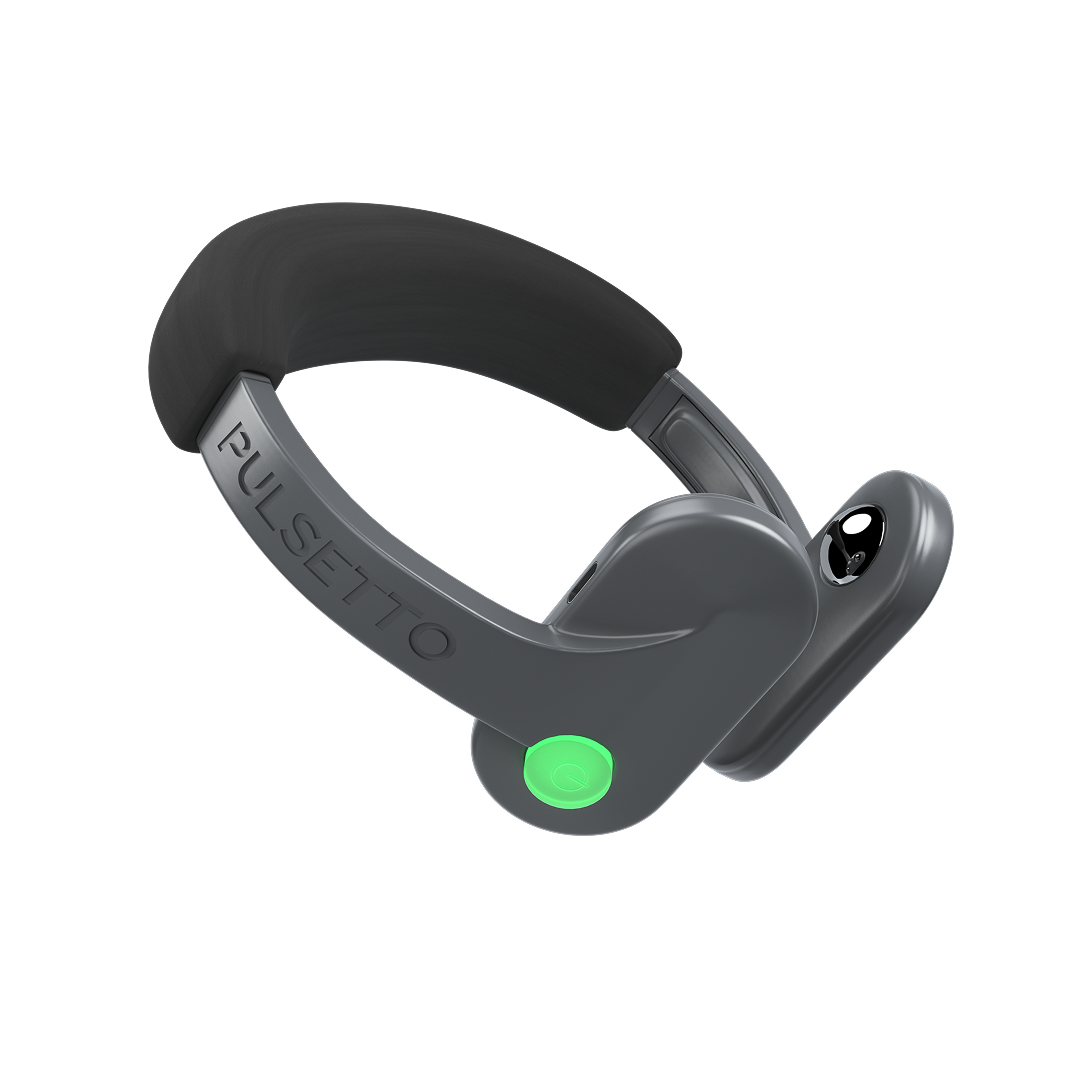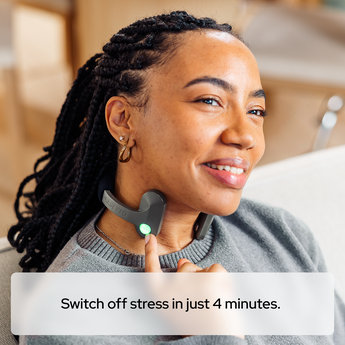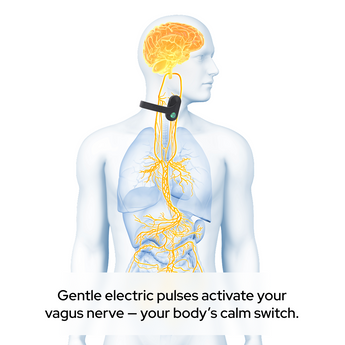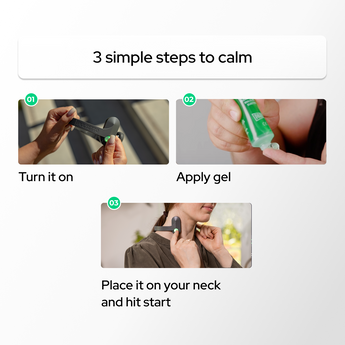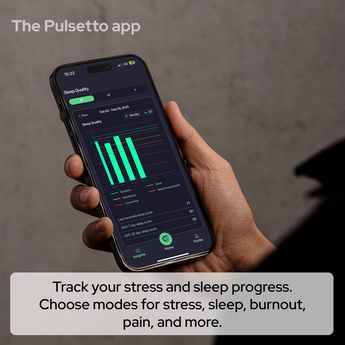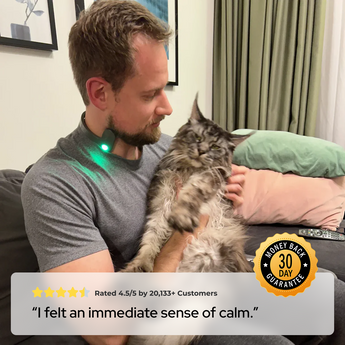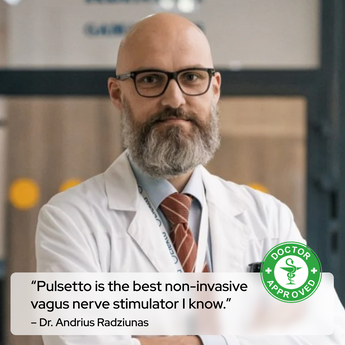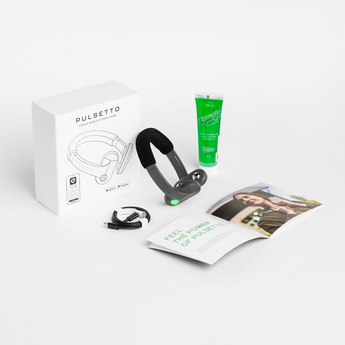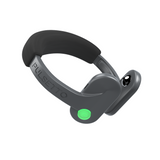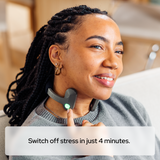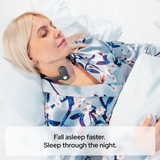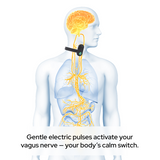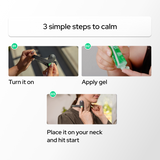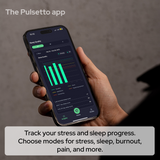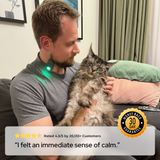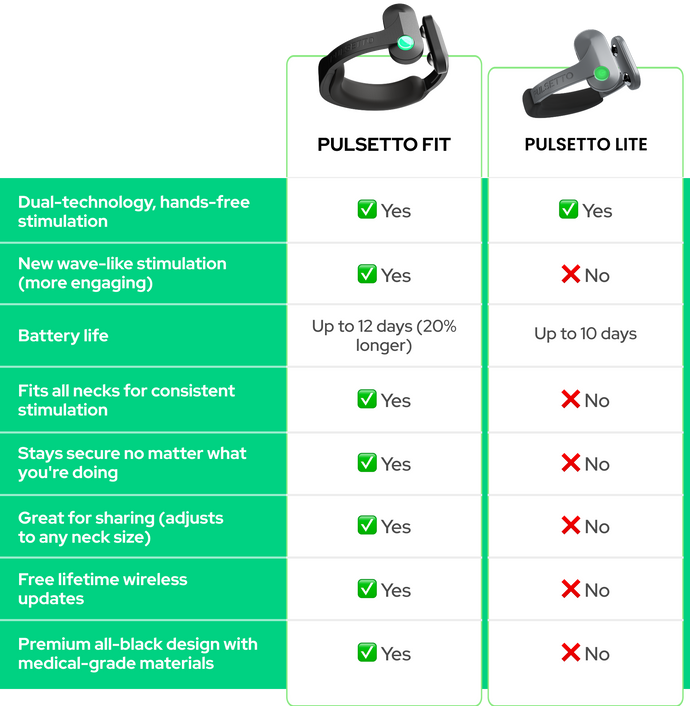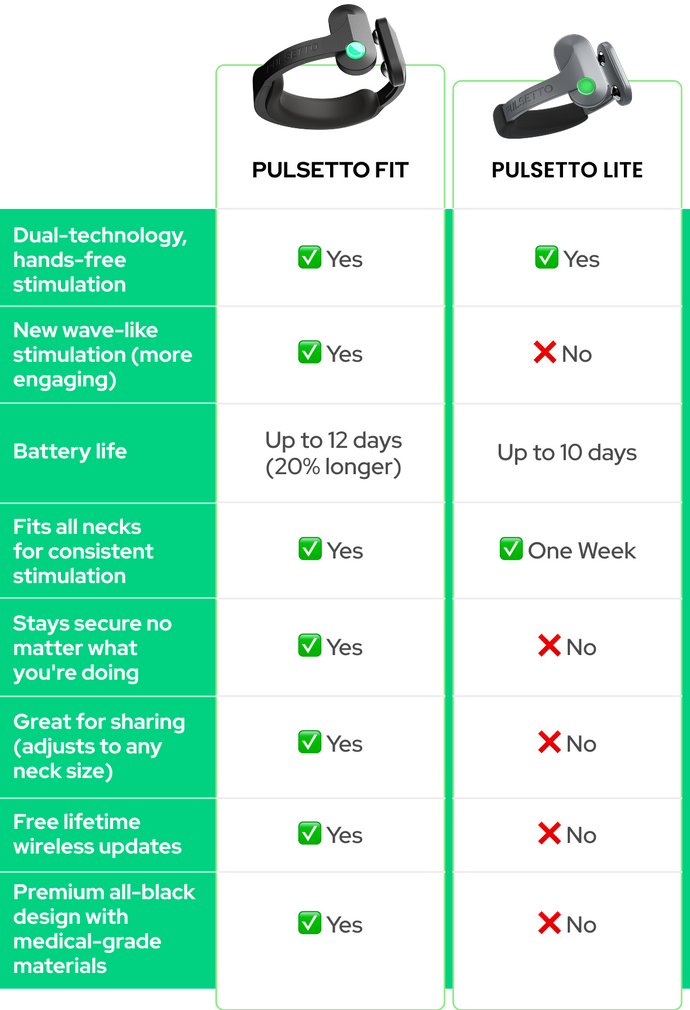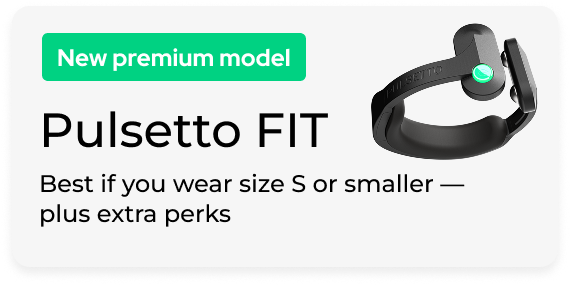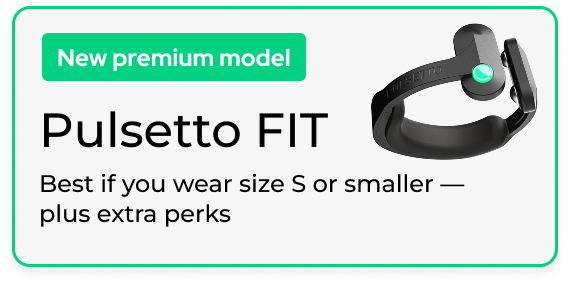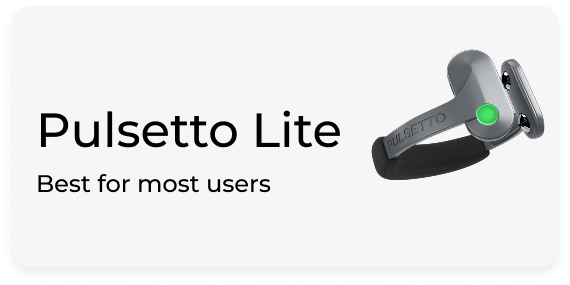

Have a Question See Our FAQs
Is Pulsetto safe to use every day?
Absolutely. The Pulsetto device itself is fully certified by the FCC and CE, which means it complies with strict laws and is approved for use for general health. It uses the lowest bluetooth energy, called “ultra low radiofrequency energy” (ULRE), which is safe for use on the body.
It’s also clinically tested and designed for daily use. Since it’s non-invasive and drug-free, there’s no risk of dependency or side effects. You can use it once a day or several times depending on your needs, before bed, during a stressful moment, or to reset between work tasks. It’s safe, simple, and built for consistency, so the more you use it, the better your nervous system functions over time.
Above all, Pulsetto devices have performed more than 1.5 million simulations already with zero side effects.
How fast will I feel results?
Most users feel noticeably calmer within just 4 minutes. That’s because Pulsetto uses clinically proven vagus nerve stimulation to rapidly shift your nervous system out of fight-or-flight mode and into rest-and-digest. Unlike supplements or meditation apps, there’s no need to wait weeks for subtle changes, relief starts almost immediately. Over time, regular use also strengthens your vagal tone, making you more resilient to stress and better able to stay calm throughout the day.
What does it feel like?
It feels pleasant! Most users describe it as a slight tingling sensation, or a tickle. It’s designed to relax you, so it’s completely pain-free — otherwise it wouldn’t be very calming, would it!
What exactly is the vagus nerve, and why does it matter?
The vagus nerve is the longest cranial nerve in your body, and it plays a crucial role in regulating your mood, stress, digestion, heart rate, and sleep. It’s like your body’s internal switchboard for calm and recovery. Pulsetto gently stimulates this nerve to activate the parasympathetic nervous system, helping you slow down, relax, and restore balance. It’s the same nerve doctors stimulate in clinical settings to treat mood and anxiety disorders, but Pulsetto brings this powerful science home.
Can Pulsetto help me sleep better?
Yes, Pulsetto helps you fall asleep faster, stay asleep longer, and wake up more refreshed. By stimulating your vagus nerve, it activates your parasympathetic nervous system (the one responsible for rest and recovery), helping your body power down naturally. It’s a non-invasive, drug-free solution that works with your body’s own biology. Whether you struggle with racing thoughts, trouble falling asleep, or restless nights, Pulsetto helps create the calm, balanced state your body needs to enter deep, restorative sleep.
What’s included in the Pulsetto App? Is it free?
Yes, the app is 100% free and comes included with the Pulsetto device. It offers 5 unlimited stimulation programs for sleep improvement, nervousness, stress reduction, burnout, and pain management.
The app works with both iOS and Android. It also has a specialized Sound Library filled with sounds specifically designed for Pulsetto, which improve the overall experience.
Do I need to be tech-savvy to use it?
Not at all. Pulsetto is designed to be incredibly easy to use. Just place it around your neck, open the free app, and start your session. The app walks you through everything, from choosing the type of session to adjusting intensity levels. Even if you're not into tech, you’ll find it intuitive and seamless. It’s as easy as putting on a pair of headphones and pressing play, except instead of sound, you're stimulating calm.
Can Pulsetto really help with stress and anxiety?
Yes, and that’s where Pulsetto truly shines. Chronic stress and anxiety are often caused by an overactive sympathetic nervous system (the fight-or-flight response). Pulsetto works by activating the opposite system, the parasympathetic, which signals to your body that it’s safe, helping you relax almost instantly. Whether you're managing daily overwhelm or deeper emotional stress, Pulsetto gives you a powerful tool to self-regulate in a natural, consistent way. It’s peace of mind at the push of a button.
How is Pulsetto different from other wellness tools like meditation apps or supplements?
Meditation apps and supplements can help, but they often take time, focus, and commitment. Pulsetto works physically, not just mentally. By directly stimulating the vagus nerve, it taps into your nervous system’s core functions, creating a fast and reliable physiological shift. You don’t need to “get in the zone” or wait weeks for effects. It’s consistent, clinically supported, and easy to use daily. Pulsetto is not just a wellness tool, it’s a nervous system upgrade.
What if I don’t struggle with anxiety or sleep, can Pulsetto still benefit me?
Yes! Even if you’re not actively struggling, Pulsetto can still improve your overall health and performance. Regular vagus nerve stimulation boosts focus, sharpens mental clarity, supports digestion, reduces inflammation, and even enhances athletic recovery. Think of it like exercise for your nervous system, the more you use it, the stronger and more balanced it becomes. Pulsetto is perfect for anyone who wants to feel more grounded, energized, and resilient in their everyday life.
Who is Pulsetto designed for?
Pulsetto is for anyone who feels overwhelmed, stressed, tired, anxious, or sleep-deprived, basically, most people today. It’s especially helpful for busy professionals, parents, high-performers, and anyone seeking a non-medicated, science-backed way to feel better. Whether you're facing burnout or just want a daily mental reset, Pulsetto empowers you to take back control of your mood, focus, and energy, with just minutes a day.
What if it doesn’t work for me?
We stand behind Pulsetto with a 30-day money-back guarantee and a 2-year warranty. While over 86% of users report feeling calmer and less stressed, we understand that every body is different. That’s why we encourage you to try it risk-free and see how it fits into your routine. If you’re not satisfied, we’ll make it right, because your well-being comes first. No gimmicks, no pressure, just real results or your money back.
Will I have to pay any additional customs, duties or VAT fees when I receive my order?
Depending on your country, it is possible that you will be charged one or more of these fees when you receive your order.
Please note that all international orders are charged in US dollars. International charges are based on the standard exchange rates between your currency and the US dollar at the time of purchase or refund.
Will you notify me by email when my order has shipped?
Yes, we will send an invoice by email when your order has been placed and another when your order has been shipped.
If you can not find our emails in your normal inbox, it is worth checking in your spam or junk mail folder.
© 2025 Pulsetto. All Rights Reserved.
Oopsie! Looks like your cart needs some company. Let's put some goodies in there!
